There is more to the Ligurian seaside than just world-famous destinations such as Portofino and Cinque Terre. Stretching from France to Tuscany, the Riviera boasts a diverse range of resorts where summer leisure and culinary delights meet medieval history and maritime traditions.
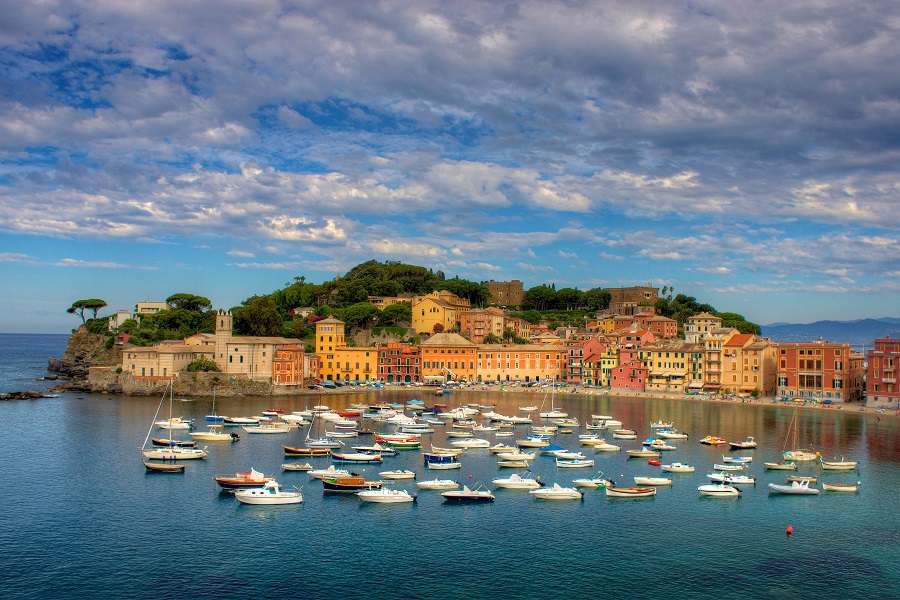
Silence Bay in Sestri Levante (Photo: Jiuguang wang via Wikimedia)
Once home to the Republic of Genoa and frequently targeted by Saracen pirates, the Ligurian coast is today a tourist destination offering both famed attractions and lesser-known gems. The western ‘Riviera di Ponente’ is more suited to sand lovers, while shingle and rocks are typical in the eastern ‘Riviera di Levante’.
Mediterranean landscapes grace the whole coastline, with sheer cliffs plunging into azure water, sun-drenched agricultural terraces stepping up the hillsides, and pastel-coloured houses lining the shore. What’s more, a slice of focaccia or a local pasta dressed with vivid green pesto just taste better when served at the water’s edge.
Sestri Levante
The fairy-tale atmosphere evoked by Sestri Levante allows for poetic license when it comes to toponyms. Locally known as ‘The Island’, the rocky promontory is in fact linked to the shore by a narrow strip of land separating two bays. ‘Bay of the Fables’ owes its name to Danish writer Hans Christian Andersen, who holidayed here in 1833, and it wouldn’t be surprising if a little mermaid came to his mind as he beheld the Tigullian Gulf from a nearby hill. The eastern side is more secluded, as is suggested by the name ‘Silence Bay’, which is backed by a picturesque row of colourful houses. The coast further east offers more beaches and natural attractions, while the old town is rich in historic landmarks.
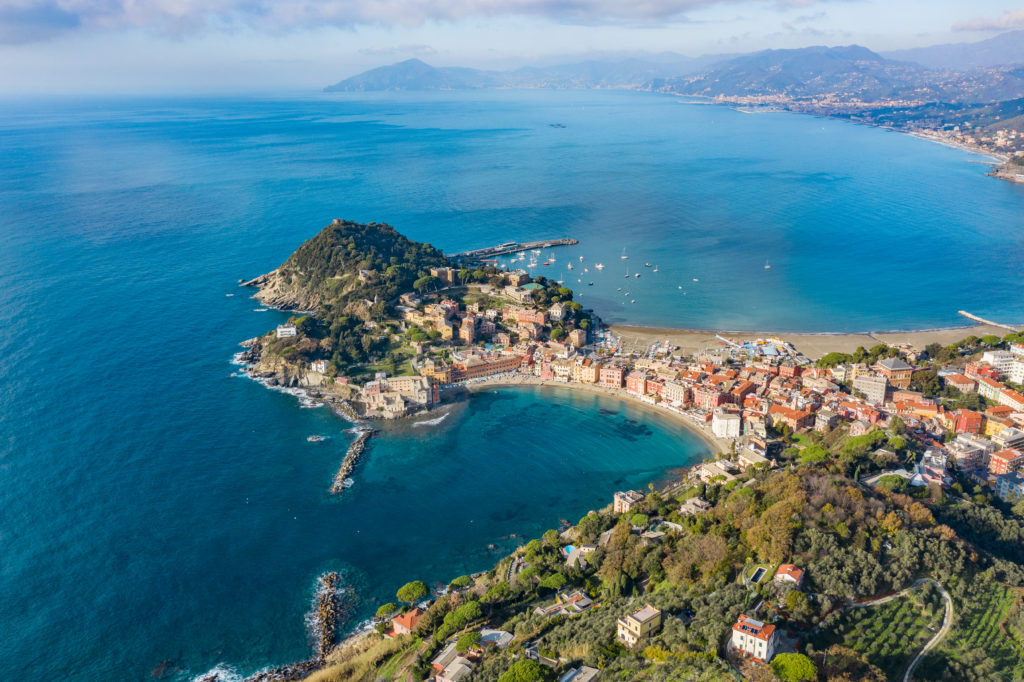
‘The Island’ of Sestri Levante, backdropped by the Tigullio Gulf (Photo: IAT Sestri Levante)
Finale Ligure
The marina of Finale Ligure combines modern looks with the typical atmosphere of a Ligurian seaside resort. Private and free areas divide the wide sandy beach, backed by a shady promenade that’s ideal for refreshing walks after long sunbathing sessions. A 20-minute walk inland, the historic centre Finalborgo is a charming maze of alleyways enclosed within medieval walls, and enriched by ancient noble palaces. Not to be missed is the hamlet of Varigotti, 5 km eastwards along the coast, a fishing village home to some of Liguria’s most sought-after beaches such as Baia dei Saraceni (Saracens’ Bay).
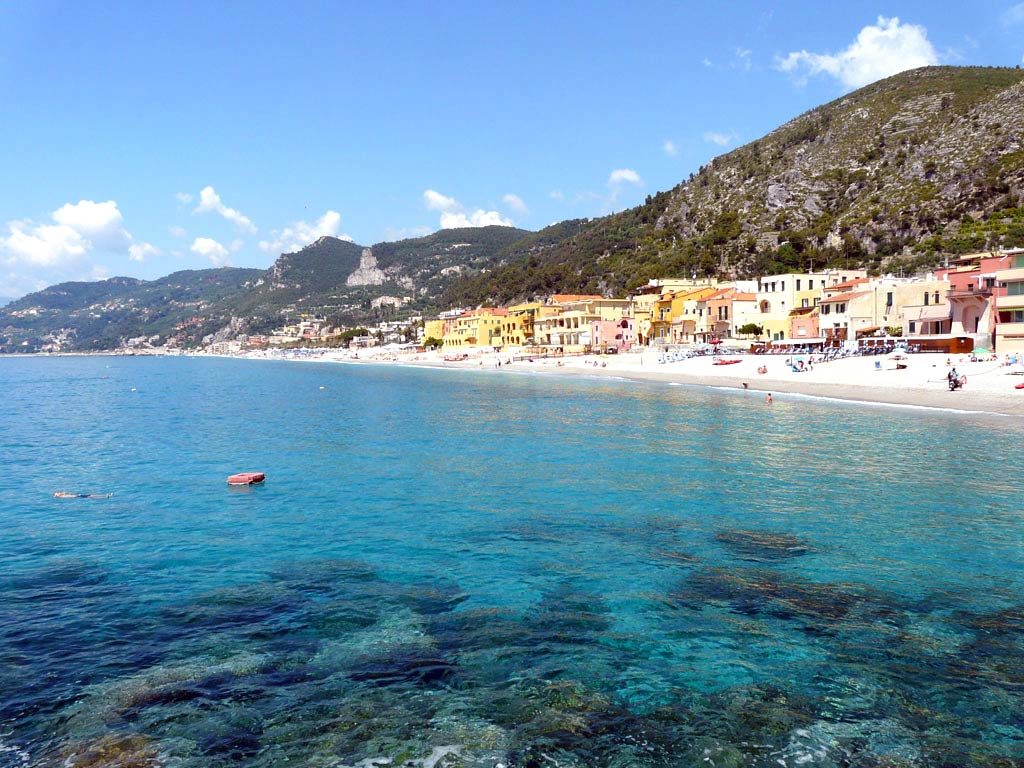
The fishing village of Varigotti (Photo: Comune Finale Ligure)
Framura
Scattered across the rural landscapes of the eastern Riviera, Framura offers a peaceful retreat away from the crowds of neighbouring Cinque Terre. The village consists of five separate hamlets, the highest of which is located 300 metres above sea level. In between them, stretches of olive trees and agricultural terraces border scenic hikes along winding mule tracks. The way down to the sea is punctuated by ancient watchtowers dating from as far back as the ninth century, while the jagged coastline offers a number of small inlets and rocky bathing spots. A lift links the small harbour to the train station, which also marks the starting point of a panoramic cycling route along a 19th-century seaside railway.
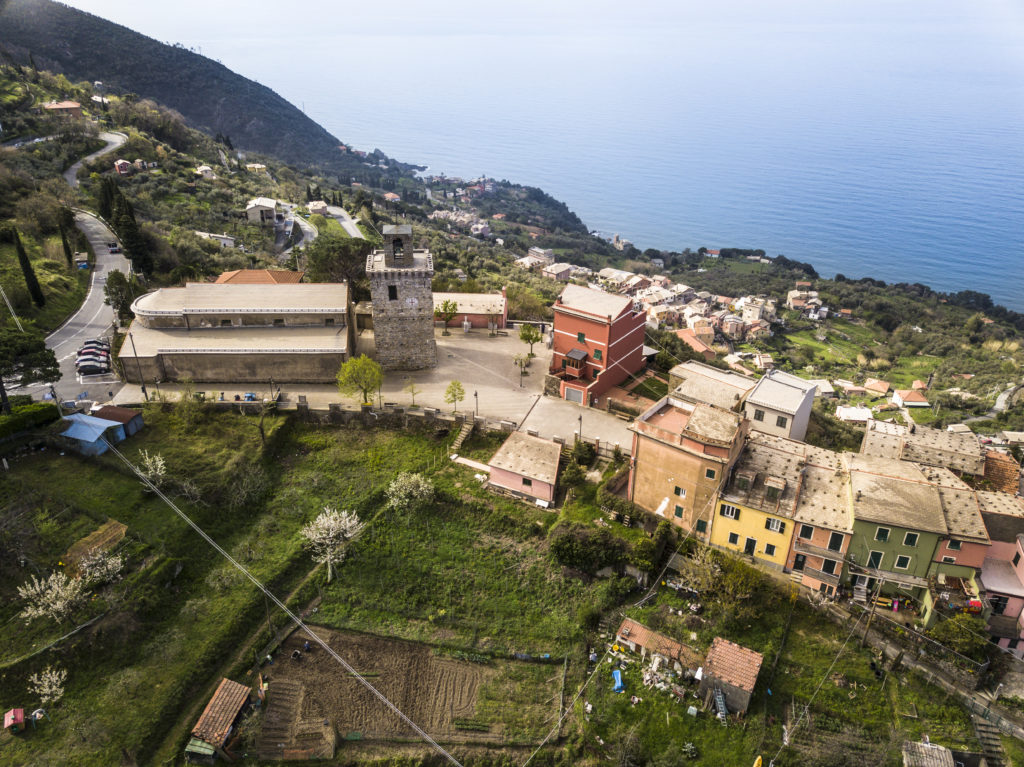
Marked by its Carolingian Tower, Costa is one of the five hamlets forming Framura (Photo: Adelmo Massola)
Noli
The sandy beach of Noli extends over a kilometre, lapped by famously-clear water and equipped with plenty of facilities for summer play. Nestled in a natural bay and surrounded by hilly landscapes, the town thrived as an independent maritime republic for 600 years, until Napoleon’s army occupied the region in 1797. Torre del Canto is the highest remaining example of the many towers that once shaped the skyline, while other landmarks include San Paragorio church, the town hall and Monte Ursino Castle, which overlooks the bay. Fishing is still a staple of the local economy, making fresh catches available year-round.
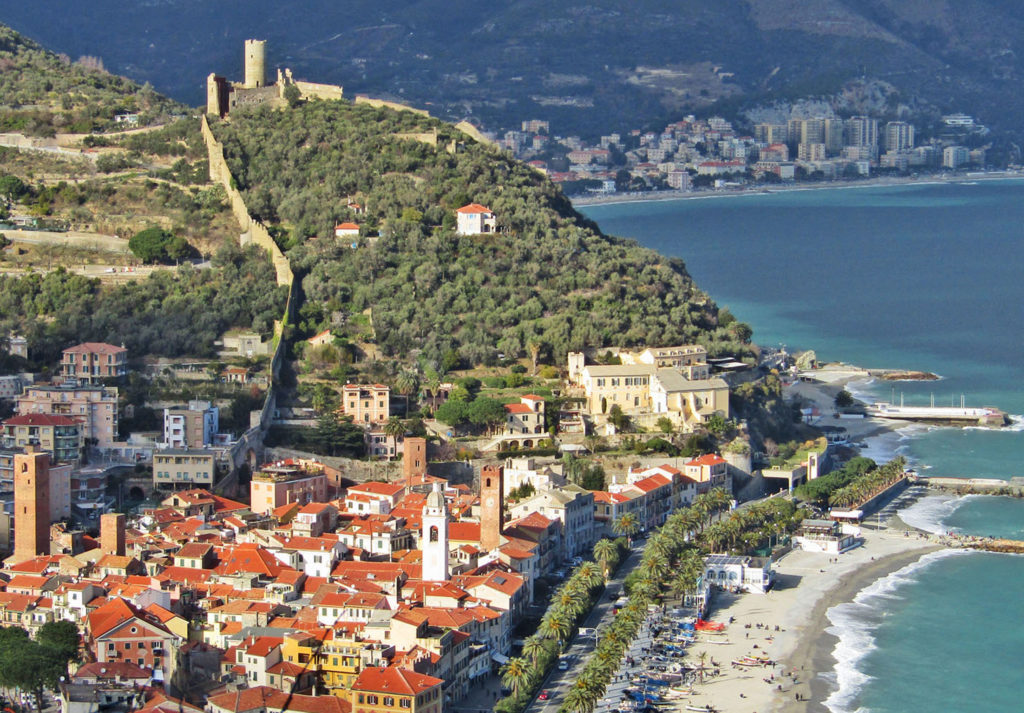
Noli’s old town, waterfront and Monte Ursino Castle (Photo: Ufficio Turismo Noli)
Moneglia
Narrow and intermittently scenic, the alternating one-way tunnel leading to Moneglia can be both a blessing and a curse. The wide bay waiting at arrival, however, is unlikely to raise mixed feelings; it is surrounded by lush vegetation and is kept secluded from the rest of the Riviera by two promontories on either side. The surrounding land holds wild hiking trails and hidden bathing spots, while the main beach makes for a more accessible option. A caruggio (typical Ligurian alley) cuts through the old centre, livened up by many bars and restaurants. The historic sites in Moneglia include two medieval fortresses, one in ruins and the other topped by a peculiar Art Nouveau chatelet.
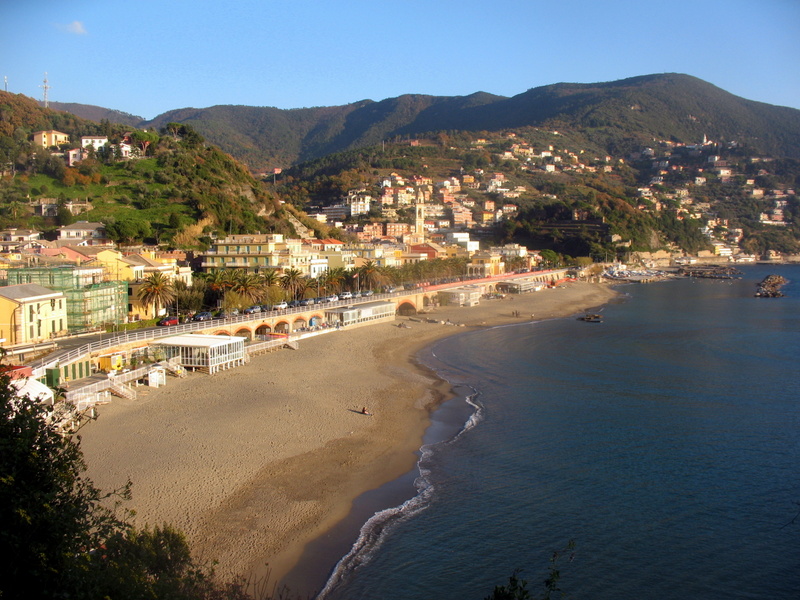
The secluded bay of Moneglia (Photo: Tatiana Yalovaya via Wikimedia)
Laigueglia
The medieval fishing town lives on in Laigueglia’s exceptionally well-preserved historic centre. The beach reaches the doorsteps of waterside houses and nearly sneaks into alleyways and piazzette, while the 16th-century watchtower overlooks the gulf and Gallinara Island. Many landmarks scattered across the village bear testimony to the town’s maritime heritage, including a small chapel built by Catalan coral fishers who relocated here since the 14th century. The summer highlight is the thrilling pyrotechnics-driven historical re-enactment of the raid perpetrated by famous pirate Dragut in 1546.
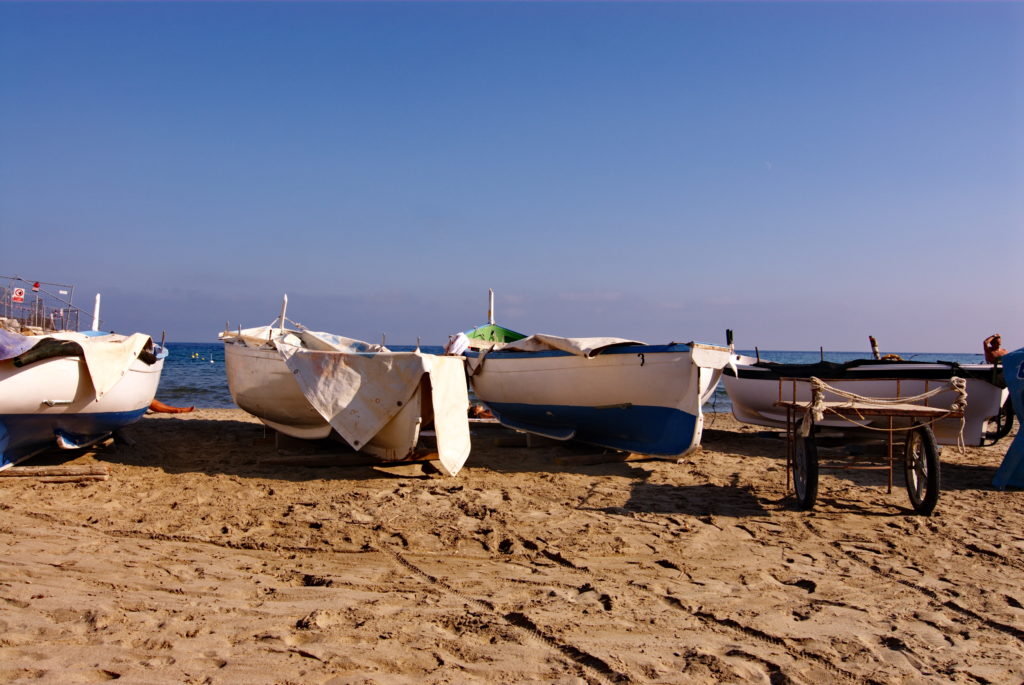
Fishing boats resting on Laigueglia’s beach (Photo: Roger Kolly via Flickr)
Camogli
Multicoloured houses lining the waterfront are a quintessential Ligurian view. But in Camogli they make for such beautiful views that they are its defining trait. Once boasting an extraordinary merchant fleet, the town is nestled on a stretch of coast east of Genoa city, with Paradise Gulf watched over by the Dragonara Castle, standing at the end of the beach. The adjoining promontory is home to must-see towns such as San Fruttuoso and Portofino, reached either by ferry or via panoramic hiking trails. Anchovy-based recipes are some of the culinary standouts here, alongside regional staples such as pesto, focaccia and pansoti (herb-filled pasta usually dressed with walnut sauce).
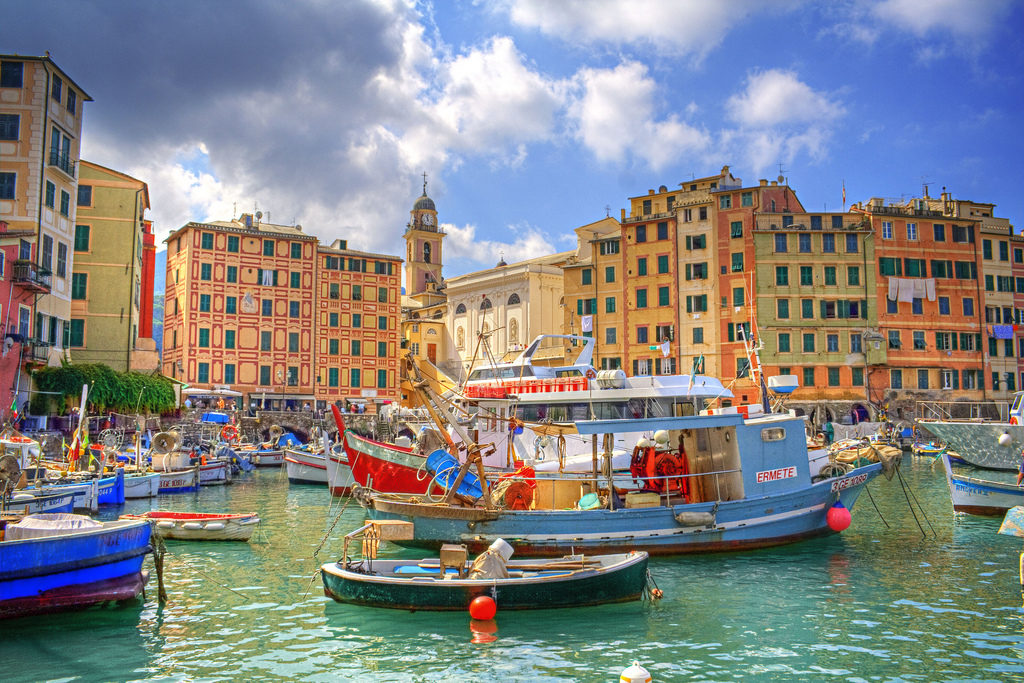
The colours of Camogli (Photo: moon 0903 via Wikimedia)
Portovenere
Portovenere marks the western end of the Poets’ Gulf, an area made famous by illustrious guests such as Mary Shelley, Henry James and Virginia Woolf. According to a local legend, English poet Lord Byron once swam over five kilometres across the gulf, although there is no historical evidence whatsoever of such effort. Still, a sea grotto bearing his name is one of the attractions of the Portovenere Natural Park, comprising of a promontory and three small islands. The town’s cultural heritage suggests a strong medieval association with the Republic of Genoa; landmarks include the city walls, a castle overlooking the gulf, and the wave-washed Saint Peter church at end of the promontory.
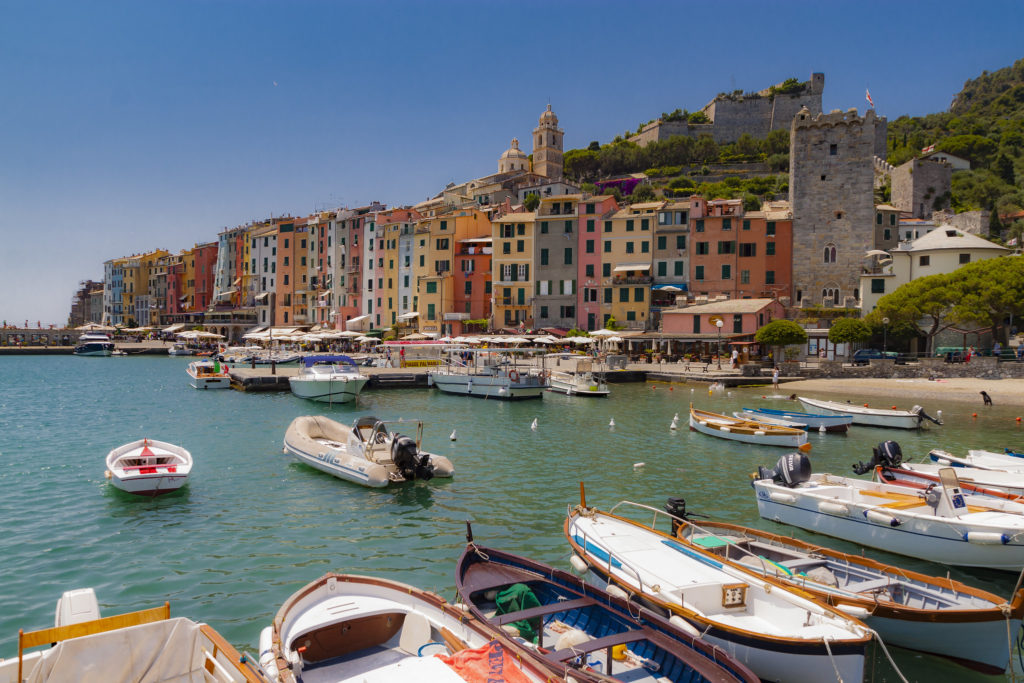
The harbour of Portovenere (Photo: Graeme Maclean via Flickr)
Tellaro
Tucked away on the eastern end of the Poets’ Gulf, Tellaro is the ideal destination for a slow stay spent in contemplation of the Mediterranean Sea. Narrow alleys run among a crowd of houses perched over the cliff, topped by a 16th-century oratory and fronted by Saint George church jutting into the water. An array of beaches and hidden bathing spots are scattered between Tellaro and nearby Lerici, a tract of coast also worth exploring for its quaint hamlets and historic sites. Every August, a culinary festival celebrates the legend according to which a giant octopus once saved the village by ringing the church bells, scaring away the attacking pirates.
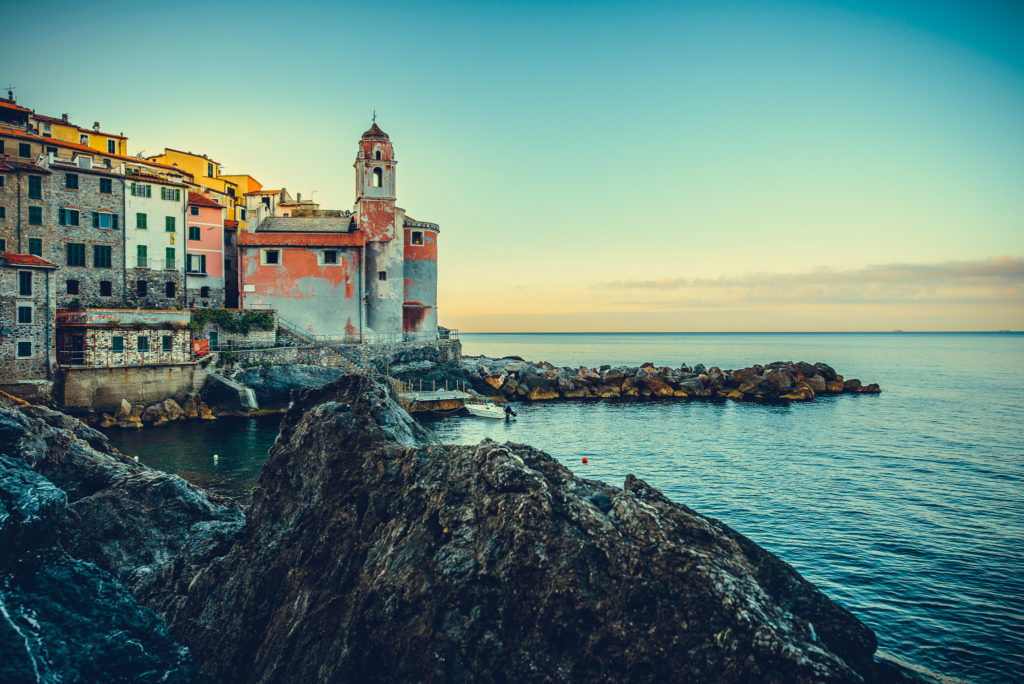
Tellaro at sunrise. Imagine a giant octupus ringing the church bells (Photo: Thomas Paal)
Bordighera
Bordighera is the southernmost point of Liguria, located only 15 km away from the French border. The summer months revolve around Lungomare Argentina, a lively and touristy promenade offering all sorts of seaside attractions. Historic palaces, botanic gardens, Sant’Ampelio Church and strolls around the old centre are some of the things worth seeing that are situated away from the beach. For those looking for an inland excursion, the small hamlets of Sasso and Borghetto are less than 5 km away. Notable local produce includes the oliva taggiasca, a widely celebrated variety of black olive.
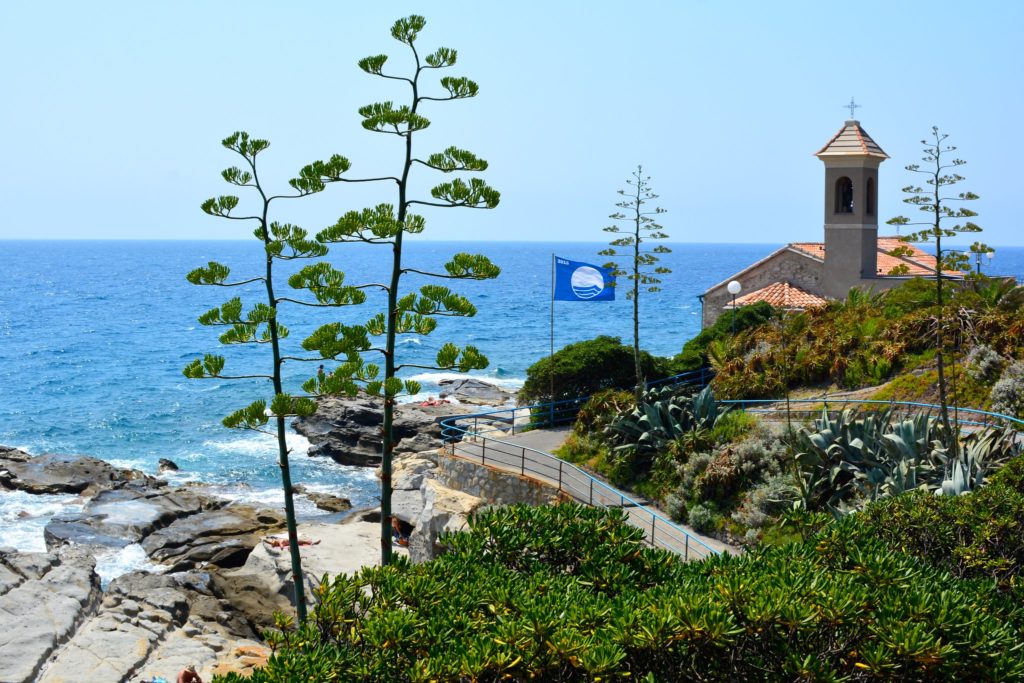
Sant’Ampelio church, Bordighera (Photo: Mirko Toller)